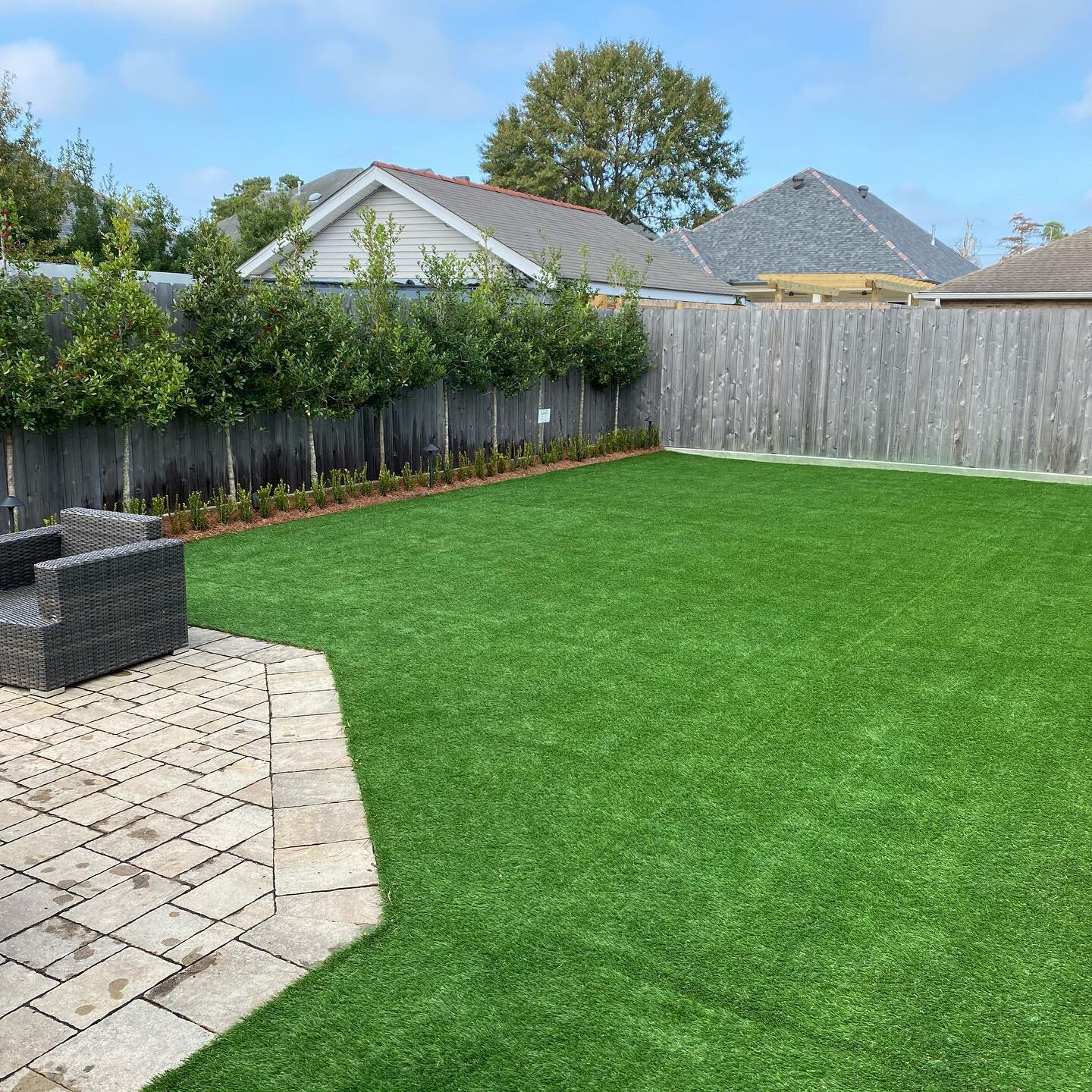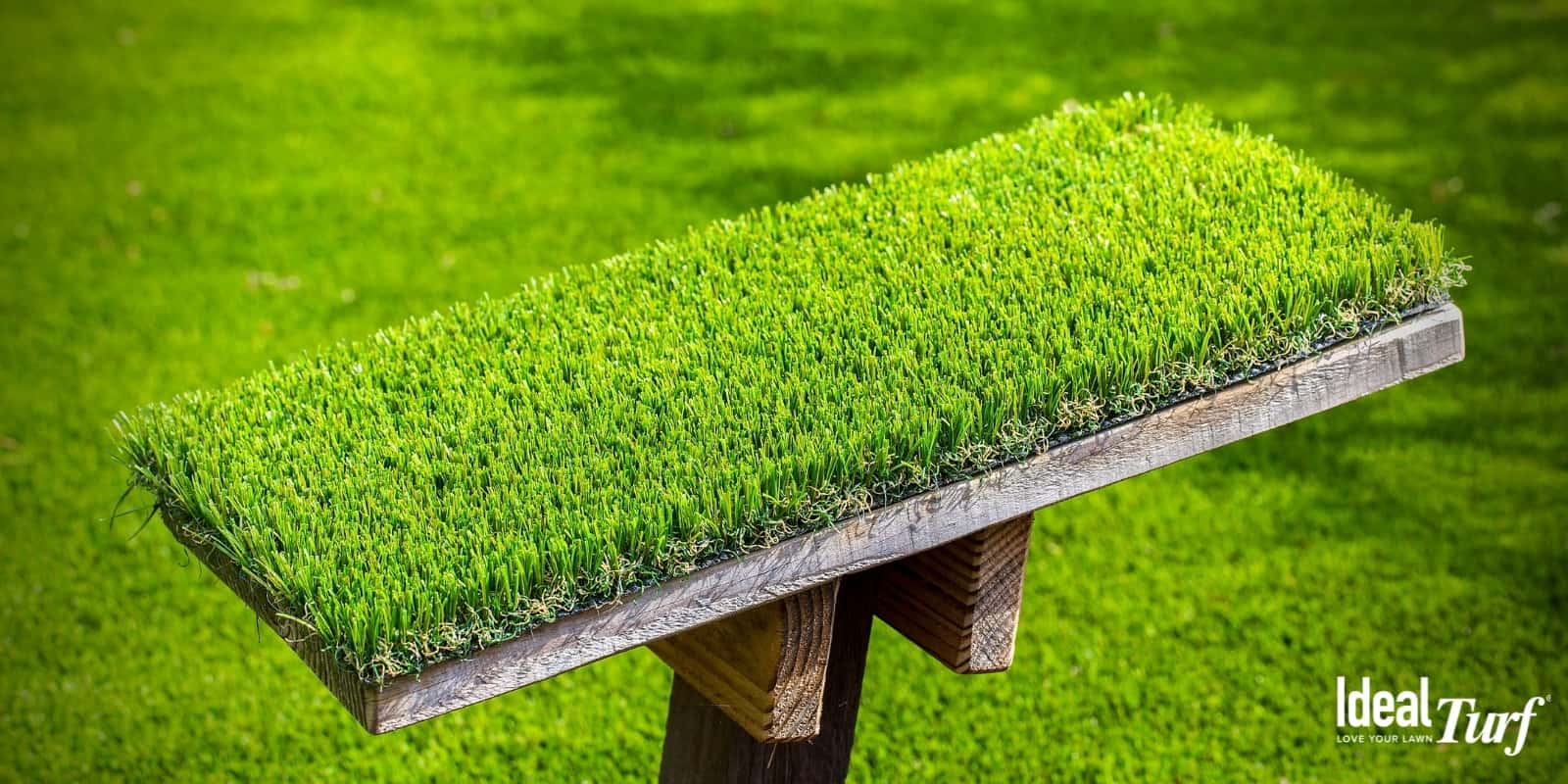Explore the Environmental Conveniences of Opting for Synthetic Grass Solutions
The adoption of synthetic grass remedies provides an engaging possibility to address pushing environmental challenges. By considerably reducing water use and reducing the application of dangerous chemicals, these alternatives not just advertise sustainable landscaping however also protect neighborhood communities. The reduced carbon footprint linked with reduced upkeep tasks contributes to an extra sustainable strategy to land management. However, the effects of these advantages extend beyond plain preservation efforts, increasing concerns about their long-term effect on habitat conservation and general environmental equilibrium. Checking out these measurements reveals a complicated interaction worth considering.
Water Preservation Benefits
One of the most considerable advantages of artificial turf is its ability to conserve water. In comparison, man-made grass does not require watering, considerably minimizing the general need for water sources.
By eliminating the demand for routine watering, artificial grass contributes to lasting landscape methods and assists mitigate the environmental effect of extreme water intake. Moreover, the preservation of water encompasses the reduction of overflow, which can bring about soil disintegration and river pollution.
Furthermore, the installment of fabricated grass enables districts and property owners to allot water sources extra effectively, concentrating on crucial usages such as alcohol consumption water and agriculture. The shift towards synthetic grass not just advertises accountable water usage however likewise straightens with broader environmental goals focused on maintaining all-natural sources.
As communities progressively prioritize sustainability, the water conservation advantages of artificial turf offer an engaging case for its adoption in residential and business landscaping projects.
Reduced Chemical Use
The change to fabricated grass substantially decreases the reliance on chemical therapies typically utilized in all-natural turf maintenance. Typical lawn management generally involves the application of plant foods, herbicides, and pesticides to promote development and control insects. These chemicals can posture dangers to human wellness, local wild animals, and the atmosphere, adding to soil and water contamination.
In comparison, synthetic grass removes the demand for these hazardous compounds. By decreasing the release of artificial compounds into the environment, fabricated turf advertises much healthier dirt and water systems.
Moreover, the lack of chemical runoff related to man-made grass installations assists secure regional rivers from air pollution, supporting water life and preserving biodiversity. Turf installation phoenix az. As neighborhoods significantly focus on lasting techniques, going with fabricated lawn provides a feasible remedy that aligns with ecological preservation goals. Via this change, homeowner can delight in lavish eco-friendly spaces without endangering environmental health, leading the method for a more lasting future
Lower Carbon Footprint

In addition, the installation of synthetic grass can lead to substantial water conservation. Natural grass require significant quantities of water for watering, which not just contributes to the carbon impact related to water extraction and therapy however additionally pressures local water sources. In contrast, fabricated turf requires minimal maintenance, calling for no watering, consequently dramatically decreasing water usage and its connected power prices.
Additionally, the durability of synthetic grass adds to its decreased carbon effect. With a life-span of approximately 15 years or more, the demand for regular replacements is lessened, causing less waste and lower energy intake in production and getting rid of standard lawn choices. Overall, synthetic turf presents a lasting option for ecologically mindful landscape design.
Habitat Conservation
Environment preservation is an important factor to consider in the discussion over landscape design selections, specifically when contrasting fabricated lawn to natural grass. All-natural yard yards commonly need extensive maintenance, including using plant foods, pesticides, and herbicides, which can negatively impact neighborhood ecosystems. These chemicals can seep into the dirt and waterways, damaging native vegetation and animals and interrupting neighborhood habitats.
In contrast, fabricated grass presents a chance to reduce the eco-friendly impact of landscaping. By selecting artificial turf, house owners can minimize the interruption of all-natural habitats related to conventional grass care methods. Synthetic grass eliminates the demand for hazardous chemicals, thereby securing nearby wildlife and preserving the honesty of surrounding ecological communities. The installment of fabricated turf can lead to the conversion of previous yard locations right into more biodiverse landscapes, such as pollinator yards or indigenous plant locations, which can support local wild animals.
Eventually, the shift to fabricated lawn not just saves water and minimizes maintenance efforts but additionally cultivates a much more unified partnership between human tasks and the natural surroundings, promoting habitat preservation while doing so.
Long-Term Sustainability
Long-lasting sustainability is a crucial consider have a peek at this site reviewing the benefits of synthetic grass over standard turf lawns. Among the most significant advantages of synthetic grass is its durability; it can last approximately 15-20 years with very little upkeep, whereas natural turf calls for regular reseeding and substitute. This durability decreases the demand for continuous sources, such as water, fertilizers, and pesticides, which are crucial for preserving a healthy and balanced turf yard.
Furthermore, artificial lawn contributes to a reduction in carbon exhausts connected with grass care devices. Standard lawns usually need gas-powered lawn mowers, leaners, and blowers, all of which add to air pollution. Phoenix turf companies. On the other hand, synthetic grass eliminates the requirement for such devices, promoting a cleaner setting
Moreover, the manufacturing of synthetic grass progressively makes use of recycled products, improving its sustainability profile. As suppliers adopt eco-friendly techniques, the environmental footprint of synthetic grass continues to reduce.

Conclusion
The adoption of synthetic grass services provides considerable ecological advantages, including considerable water conservation, minimized dependence on dangerous chemicals, and a reduced carbon impact. Man-made grass aids in preserving natural habitats by decreasing land disturbance and advertising long-term sustainability through the usage of long lasting materials. Collectively, these elements highlight the potential of artificial lawn to add favorably to environmental health and supply a sensible choice visit the site to typical landscape design practices in an increasingly resource-conscious globe.
In contrast, artificial lawn does not need watering, significantly lowering the total demand for water sources. By lessening the release of synthetic compounds right into the environment, synthetic lawn advertises healthier dirt and water systems.
Moreover, the installment of man-made turf can result in considerable water conservation. In comparison, synthetic grass needs marginal upkeep, calling for no watering, read review thus substantially reducing water usage and its connected energy expenses.

Comments on “Best Phoenix Turf Companies Providing High-Quality Synthetic Grass Options”